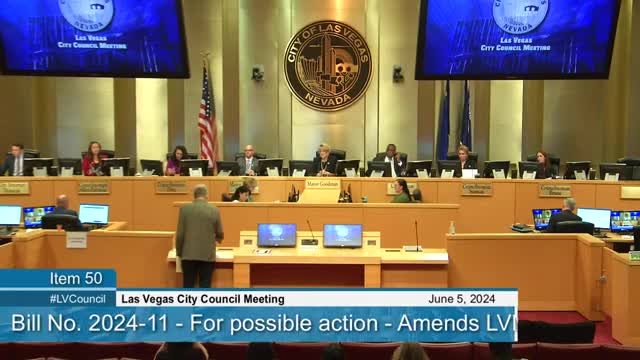City Council Debates Controversial Balloon Release Ordinance
June 06, 2024 | Las Vegas , Clark County, Nevada

This article was created by AI summarizing key points discussed. AI makes mistakes, so for full details and context, please refer to the video of the full meeting. Please report any errors so we can fix them. Report an error »

In a recent city council meeting, discussions centered around a proposed ordinance aimed at regulating the release of Mylar balloons, which has sparked a mix of support and concern among council members and community representatives.
Daniel Braisted, a local resident, emphasized the need for warning signs at locations where helium balloons are sold, arguing that without proper signage, the public may unknowingly violate the proposed ordinance. He expressed concern for individuals who might face penalties for releasing balloons without understanding the law.
Anthony Ruiz, representing Grama Energy, voiced strong support for the ordinance, highlighting the safety risks posed by Mylar balloons, which can cause electrical hazards when they come into contact with utility wires. Ruiz noted that the company had previously collaborated on legislation to phase out the sale of these balloons, underscoring the ordinance's potential environmental benefits.
However, the proposal faced significant pushback from several council members. Mayor Pro Tem raised concerns about the city's ability to enforce the ordinance effectively, citing limited resources and the existing burden on code enforcement officers. He pointed out that the city is already struggling to manage trash and debris, particularly in areas with high rates of homelessness, and questioned the practicality of enforcing balloon release regulations.
Another council member echoed these sentiments, suggesting that the ordinance could disproportionately affect low-income residents who may not fully understand the law. They proposed focusing on educational efforts and increasing signage in public parks rather than imposing fines for balloon releases.
City officials acknowledged the challenges of enforcement, noting that the code enforcement team is already stretched thin with numerous complaints and limited personnel. The discussion highlighted a broader concern about prioritizing city resources amid pressing issues, with some council members advocating for a more strategic approach to community education rather than punitive measures.
As the council deliberates on the ordinance, the debate reflects a growing awareness of environmental issues and public safety, balanced against the practical realities of enforcement and community engagement. The outcome remains uncertain as council members weigh the potential benefits against the challenges of implementation.
Daniel Braisted, a local resident, emphasized the need for warning signs at locations where helium balloons are sold, arguing that without proper signage, the public may unknowingly violate the proposed ordinance. He expressed concern for individuals who might face penalties for releasing balloons without understanding the law.
Anthony Ruiz, representing Grama Energy, voiced strong support for the ordinance, highlighting the safety risks posed by Mylar balloons, which can cause electrical hazards when they come into contact with utility wires. Ruiz noted that the company had previously collaborated on legislation to phase out the sale of these balloons, underscoring the ordinance's potential environmental benefits.
However, the proposal faced significant pushback from several council members. Mayor Pro Tem raised concerns about the city's ability to enforce the ordinance effectively, citing limited resources and the existing burden on code enforcement officers. He pointed out that the city is already struggling to manage trash and debris, particularly in areas with high rates of homelessness, and questioned the practicality of enforcing balloon release regulations.
Another council member echoed these sentiments, suggesting that the ordinance could disproportionately affect low-income residents who may not fully understand the law. They proposed focusing on educational efforts and increasing signage in public parks rather than imposing fines for balloon releases.
City officials acknowledged the challenges of enforcement, noting that the code enforcement team is already stretched thin with numerous complaints and limited personnel. The discussion highlighted a broader concern about prioritizing city resources amid pressing issues, with some council members advocating for a more strategic approach to community education rather than punitive measures.
As the council deliberates on the ordinance, the debate reflects a growing awareness of environmental issues and public safety, balanced against the practical realities of enforcement and community engagement. The outcome remains uncertain as council members weigh the potential benefits against the challenges of implementation.
View full meeting
This article is based on a recent meeting—watch the full video and explore the complete transcript for deeper insights into the discussion.
View full meeting